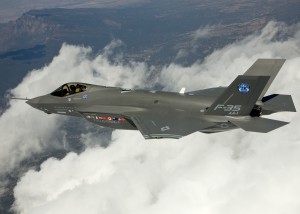Special to WorldTribune.com
WASHINGTON — The Joint Strike Fighter, plagued by technical flaws and budget overruns, has now failed in achieving stealth capability.
A leading U.S. aerospace analyst said China and Russia were capable of detecting and tracking the F-35 fighter-jet.

Bill Sweetman, a senior editor at Aviation Week, asserted that the Defense Department decided to reduce JSF’s stealth capability through underestimating the radar capabilities of U.S. adversaries.
“The F-35 is susceptible to detection by radars operating in the VHF bands of the spectrum,” Sweetman said. “The fighter’s jamming is mostly confined to the X-band, in the sector covered by its APG-81 radar. These are not criticisms of the program but the result of choices by the customer, the Pentagon.”
In an analysis that appeared in Aviation Week and the Daily Beast on April 28, Sweetman said the F-35 was also not “particularly good at jamming enemy radar.” He said the Pentagon would be forced to deploy special electronic warfare aircraft to protect JSF.
Lockheed Martin had long touted JSF as a stealth aircraft. But Sweetman said JSF was given an expendable radar decoy to disrupt a missile attack rather than to prevent tracking.
Israel and Turkey have been the only two Middle East states that agreed
to procure JSF. Israel became the first non-U.S. client of JSF, with plans
to operate 19 F-35s by the end of the decade.
Sweetman said the Pentagon long knew that VHF radar could detect JSF. He
said the F-35s stabilizers and wingtips were the same meter-class size as
VHF waves.
“Making a plane VHF-stealthy starts with removing the target’s tails, as
on the B-2 bombers,” Sweetman said. “But we did not know how to do that on a
supersonic, agile airplane — like the F-35 is supposed to be — when the
JSF specifications were written.”

You must be logged in to post a comment Login